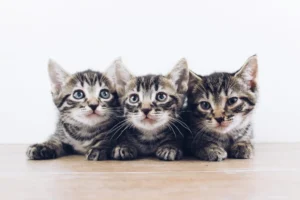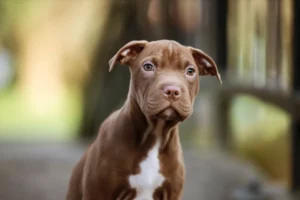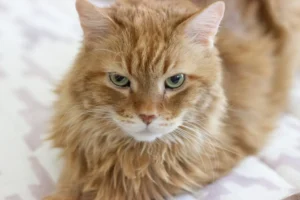In ancient Egypt, cats held a revered and essential role in society. Their importance went beyond mere companionship, as they were seen as sacred creatures with divine qualities.
Cult of Bastet
Explore the significance of cats in the cult of Bastet, the goddess of home, fertility, and protection. Learn about the worship and adoration these animals received in ancient Egyptian society.
Cats held a special place in ancient Egyptian society, especially in the cult of Bastet, the goddess of home, fertility, and protection. These graceful creatures were revered for their connection to Bastet, often depicted with the head of a lion or a domestic cat. The Egyptians believed that cats symbolized the protective and nurturing qualities of the goddess. As a result, cats were not only cherished but also worshipped and adored.
The cult of Bastet elevated cats to a divine status, where harming a cat was considered a grave offense punishable by death. Their importance in protecting homes from vermin and snakes further solidified their place in society. Cats were treated with the utmost respect and care, reflecting the deep spiritual significance they held in Egyptian culture.
Rat Catchers ## Discover how cats played a crucial role in controlling the rodent population in agricultural communities along the Nile River. Understand the practical significance of cats in maintaining food supplies and preventing disease.
In addition to their symbolic importance, cats also served a vital role as rat catchers in ancient Egypt. Living in close proximity to the Nile River, Egyptians heavily relied on agriculture for sustenance. However, with agriculture came the constant threat of rodents devouring crops and spreading disease. Cats emerged as natural hunters, keeping rodent populations in check and protecting precious food supplies.
The presence of cats in Egyptian homes and granaries was not just a convenience but a necessity for survival. Their hunting instincts and agility helped control vermin infestations, safeguarding crops and preventing the spread of diseases carried by pests. Thus, cats were not only beloved companions but also essential contributors to the well-being of Egyptian communities.
Symbolism in Art and Hieroglyphics
Cats were not only revered in practical and religious contexts but also held great symbolic significance in Egyptian art and hieroglyphics. Depicted in various forms and positions, cats symbolized protection, fertility, and grace in Egyptian iconography. They were often portrayed alongside pharaohs and in funerary art, signifying their role as guardians in this world and the afterlife.
Furthermore, cats were featured in hieroglyphics, representing concepts such as femininity, motherhood, and domesticity. Their elegant and enigmatic presence in written language added layers of meaning to Egyptian texts and inscriptions. Cats became intertwined with the very fabric of Egyptian culture, serving as powerful symbols of divinity, protection, and wisdom.
Uncover the symbolism of cats in Egyptian art and hieroglyphics, from their representation in murals to their presence in tombs. Delve into the cultural significance of these depictions.
Cats held a sacred and revered status in ancient Egypt, symbolizing various aspects of life and spirituality. In Egyptian art and hieroglyphics, cats were often depicted as protectors and guardians, representing the qualities of grace, poise, and ferocity. These feline figures adorned murals, tombs, and artifacts, emphasizing their importance in Egyptian society. The presence of cats in burial chambers and temples signified their role in guiding souls to the afterlife, showcasing their significance in spiritual beliefs.
Royal Companions
In ancient Egypt, cats were not only revered symbols but also cherished companions of royalty. Pharaohs and nobles kept cats as close companions, highlighting their privileged status in society. These royal feline friends enjoyed lavish lifestyles, receiving the best care and attention from their owners. Cats were often pampered and adorned with jewelry, reflecting the special bond between these regal animals and the elite class. Their presence in the royal court demonstrated the high regard Egyptians held for cats.
Protection of the Home
Cats played a crucial role in protecting Egyptian households from pests and vermin. As natural hunters, cats helped control the population of rodents and insects, safeguarding food supplies and preventing the spread of diseases. Their keen hunting skills made them valuable guardians of homes, ensuring a safe and hygienic living environment for their human companions. Egyptians honored cats for their role in maintaining clean and harmonious households, showcasing their practical importance beyond their symbolic significance.
Here are some tips to honor and care for your feline friend: 1. Provide a balanced diet rich in protein to support your cat’s health and energy levels. 2. Create a safe and stimulating environment with toys and scratching posts to keep your cat entertained and active. 3. Schedule regular veterinary check-ups to monitor your cat’s overall well-being and address any health concerns promptly. 4. Show affection and attention to strengthen the bond between you and your cat, promoting a loving and trusting relationship.
Understand the belief that cats were protectors of the home and family in ancient Egypt, warding off evil spirits and bringing good luck. Delve into the rituals and customs associated with these beliefs.
Cats held a special significance in ancient Egyptian society, where they were believed to be guardians of the home and family. Felines were thought to possess mystical powers and were revered for their ability to protect against evil spirits. Egyptians worshipped cat goddesses such as Bastet, who symbolized protection, fertility, and motherhood. To show reverence for these divine creatures, rituals and customs were developed, including mummifying cats and burying them with their owners to ensure safe passage to the afterlife. Cats were also kept as pets in many households, cared for and revered as sacred animals.
Islamic Conquest
Following the Islamic conquest of Egypt, there was a shift in attitudes towards cats. Islamic culture viewed cats differently than the ancient Egyptians, leading to a decline in their status. While still appreciated for their role in controlling pests, cats were no longer worshipped as divine beings. This cultural change had a lasting impact on the way cats were treated and perceived in Egyptian society, marking a transition from revered protectors to more utilitarian animals.
Cultural Legacy
The cultural legacy of cats in Egypt is deeply rooted in history and continues to influence modern-day attitudes towards these animals. Despite the shift in belief systems over the centuries, cats still hold a special place in Egyptian culture. They are often viewed as symbols of protection, grace, and independence. Today, cats roam the streets of Egypt, where they are fed and cared for by locals who appreciate their presence. The cultural legacy of cats in Egypt serves as a reminder of the enduring connection between humans and animals throughout history.
Discover how the legacy of cats in ancient Egypt continues to influence modern perceptions and attitudes towards these animals. Explore the lasting impact of this ancient civilization on our relationship with cats today.
In ancient Egypt, cats held a special place in society, revered for their connection to the goddess Bastet, who represented protection, fertility, and motherhood. This association elevated cats to a divine status, leading to their widespread worship and adoration. The ancient Egyptians also believed that cats possessed mystical powers, such as the ability to ward off evil spirits and bring good luck. Fast forward to modern times, and the legacy of this reverence for cats still persists. Cats are now seen as symbols of mystery, independence, and elegance, traits that stem from their portrayal in ancient Egyptian art and literature. This enduring influence has shaped our contemporary perception of cats as enigmatic creatures deserving of respect and admiration, highlighting the profound impact of ancient Egyptian culture on our relationship with these beloved animals.
Fun Facts
- Mummification: Did you know that cats were often mummified in ancient Egypt to accompany their owners to the afterlife? This practice highlighted the high regard in which cats were held and showcased their importance in Egyptian society.
- Deity Association: Cats were closely linked to several Egyptian deities, with Bastet being the most prominent. Depicted as a lioness or a woman with the head of a lioness, Bastet symbolized protection, fertility, and the home. Cats were revered for their connection to this powerful goddess.
- Guardianship: Cats were valued for their role in protecting homes and crops from rodents, making them highly prized for their pest control abilities. Their presence was believed to bring prosperity and good fortune to households.
Delight in these intriguing facts about cats in ancient Egypt, showcasing the deep reverence and significance these animals held in this ancient civilization.
Alex, a passionate animal lover, has experience in training and understanding animal behavior. As a proud pet parent to two dogs and three cats, he founded AnimalReport.net to share insights from animal experts and expand his knowledge of the animal kingdom.









